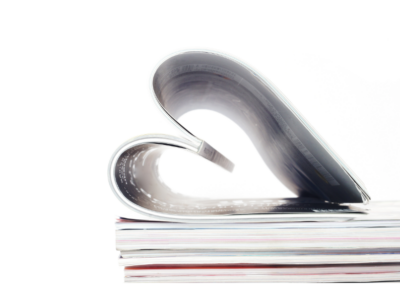By Chandra Turner
I was one of those editors who said I’d never leave editorial. I was a firm believer in The Line. You know the one. The one between church and state, editorial and sales, morality and immorality. My skin crawled in meetings with our publisher when I was asked to write another story about a rare illness or feature a certain lipstick to woo an advertiser. I loathed ad sales; I saw their tactics as slick and scheming and not the business necessity that they are.
In many ways I was naive. But I was also a product of my time. A time where there really was a line, when the only place you could create quality stories with big budgets and big impact was in media. So staying on the right side of the line was not only noble, but beneficial to earn the trust and respect of your readers. Guess what folks? That’s no longer the case.
According to a Contently report, 63% of Americans trust brands more than media companies or news outlets. Let that sink in. It also doesn’t help that media has been struggling with layoffs (again), shrinking staffs, and budgets even worse than during Covid. (This isn’t the post to explain why, but basically our business model has been flawed from the get-go.) Only a few traditional media companies can continue to do ground-breaking reporting and innovative storytelling. How many media outlets do you pay for? For me, I’m down to The New York Times, New York, and a few industry newsletters. I even let my New Yorker subscription lapse.
Non-media brands are picking up the ball where media can no longer afford to. They are creating content — stories, videos, audio, photography — just as well (sometimes better) than media brands. They are referred to as Brand Publishers.
The new line that is being blurred is not the one between editorial and advertising but between what is a media company and what is a non-media company.
Mega legacy brands like Red Bull, Marriott, and Restoration Hardware all have created “editorial” products, including dynamic digital platforms, video series, podcasts, and glossy magazines. L’Oréal has Makeup.com. Chase has The Infatuation. General Mills has Tablespoon.
Startups are baking in original content from the beginning, realizing that it is just good business. Luggage startup Away has Here magazine. Payment app Square has The Bottom Line. The telemedicine company Hone Health hired me to find their head of content for their award-winning online magazine, The Edge; it competes with the likes of Men’s Health. The VC firm 776 hired me to find their first editorial lead so they could be on the cutting edge of sharing what’s happening in tech. They could be the next Wired.
It’s not only possible. It’s probable that the rising brands of today will be the media companies of tomorrow. Think about Bloomberg, the OG of brand publishing. The company originally created hardware and software for stock traders. Now we don’t question that Bloomberg is also a media company with its quality journalism products like BusinessWeek and now Bloomberg Radio and Bloomberg Podcasts.
The corporate world is hungry to find a place for this kind of original content or “editorial,” but it is not quite sure where it fits within the corporate structure. There’s a sliding scale of its purpose that varies from company to company. On one end, “editorial” can directly drive sales — a story about trends in linens can link to buying the company’s sheets. On the other end, the purpose is merely a rub-off effect — a way to shine a light on the brand as a thought leader in its corner of the marketplace whether its bedding, makeup, personal finance, healthcare, you name it. Think of a video series on body acceptance brought to you by a skincare company. Or a restaurant review by a notable food critic on a site owned by a credit card company. A podcast about innovation funded by a VC firm.
Brands can bypass traditional media altogether to get their message out. Why use PR agencies when they can speak directly to their customer via their own “editorial” products? (Note that I refuse to drop the quote marks!) Those products could even (eventually) pay for themselves with their own subscription fees, advertising, or pay walls.
Just like media companies, brands can optimize their “editorial” products for Google and pay to distribute the content across social media. They can create smart, compelling, funny, educational storytelling that goes viral, changes people’s thinking, and moves the conversation forward. Many are already doing all these things and putting serious resources against it. With the power of “editorial,” brands eventually could be the next news-makers, trend-setters, and drivers of the cultural zeitgeist.
What do they need to get there? Well, editors, of course.
#EditorsMakeTheBestHires
Chandra Turner is founder of The Talent Fairy, a boutique recruiting agency that specializes in editorial talent. Subscribe to her Substack for more insights and trends about the editorial job market.




 What Industry Are We In Anyway?
What Industry Are We In Anyway?